THE YELLOW JACK HOUSE OF HANCOCK ST (1889)
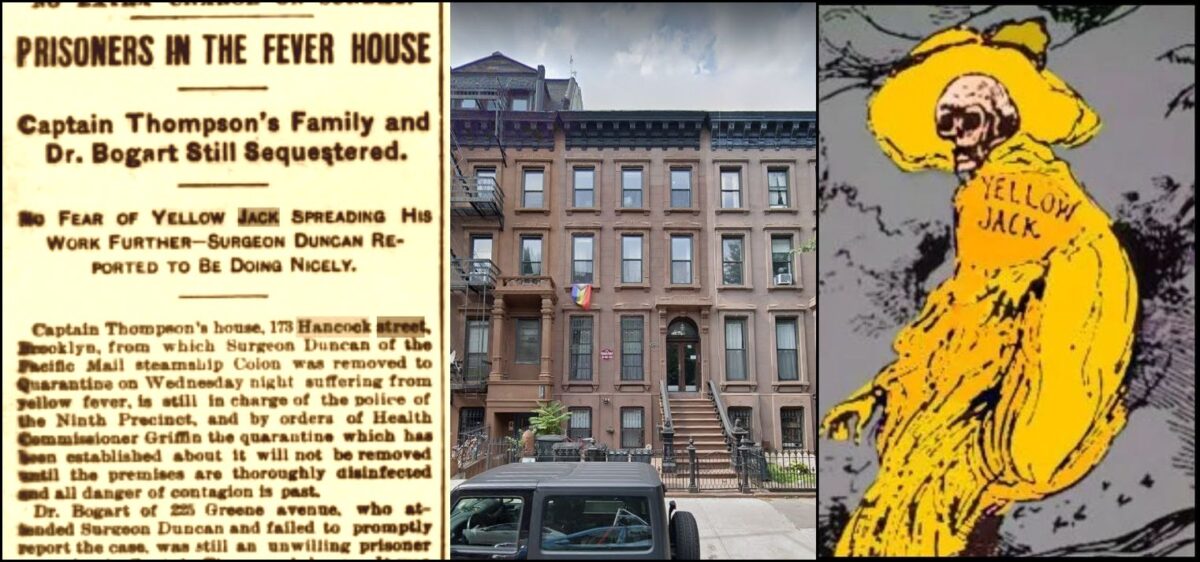
Brownstone Detectives investigates the history of our clients’ homes.
The story you are about to read was composed from research conducted in the course of one of those investigations.
Do you know the history of YOUR house?
********************************************************************************************************************************
The following story comes from The Evening World:
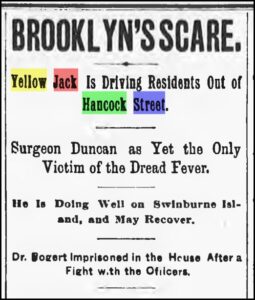
“The discovery of a fully developed case of yellow fever in Brooklyn, as first reported in yesterday’s Evening World, has created intense excitement in Brooklyn, particularly in the neighborhood of 173 Hancock street, where the case was found, and ns a result one family moved away this morning to the country and others are preparing to leave.
“Dr. R. W. H. Duncan, surgeon of the Pacific Mail steamship Colon, who is the yellow fever patient, has been taken to Swinburne Island, and all the other inmates of the house are kept within doors by a guard of police officers, who ore instructed to keep a close quarantine, not allowing anyone to enter or leave the house.
“Dr. Duncan arrived in this city last Friday and was taken to the house of W. H. Thompson, 173 Hancock street, with whose daughter he was soon to be married. He was ill and Dr. J. B. Bogert. of 225 Greene avenue, was called to attend him.
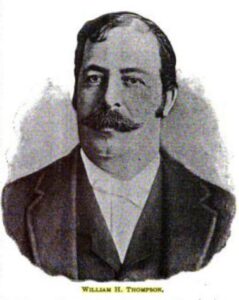
“Shortly before midnight Tuesday, Dr. Bogert notified he Health Department that the case was one of yellow fever. Dr. Young, of the Brooklyn Health Board, communicated with Commissioner Griffen, who sent Inspector George B. Convery to investigate in his report Inspector Convery gives the details of Dr. Duncan’s arrival, and after a thorough examination of the case says that there is not the slightest doubt that it in a case of genuine Yellow Jack.
“The Brooklyn Health Commissioners are greatly incensed over the apparent negligence of duty of the Quarantine officials in not making a closer investigation on board the Colon before she was allowed to come into port, and they will call for an investigation.
“The Colon came direct from Aspinwall, where there are cases of yellow fever raging, and the vessel was allowed to pass through Quarantine without any extra precautions being taken.
“All precautions have been taken against the disease spreading.
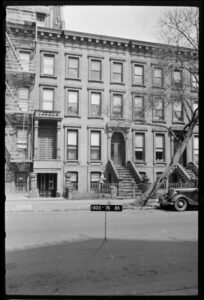
“As soon as it was known positively that the case was yellow fever, the Board of Health ordered a strict quarantine kept over the house in Hancock street. They decided that all the inmates should be kept in until nil danger was passed, and they set about to secure their prisoners.
“Mrs. Thompson, Miss Thompson, who is Dr. Duncan’s fiancée; a child and the washerwoman were all indoors, but the Health officers didn’t know how to catch Dr. Bogert.
“A warrant was issued for his arrest, but the health officers did not wish to expose others to danger by taking him into a crowded court-room, so they sent him up to see his patient yesterday afternoon, and when he attempted to leave the house he was informed that he could not do so.
“The house has been disinfected with burned sulphur, hut all the inmates will be kept until danger is past.
“Then Dr. Bogert, will have to answer for withholding information of the case from the Board of Health. If found guilty lie is liable to a fine of $250 and ten days’ imprisonment.
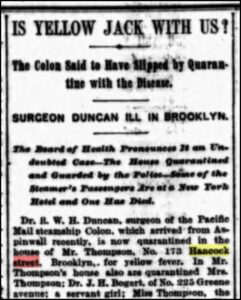
“Dr. Bogert’s excuse is that ho was too busy to report the case. Ho strongly objected to being kept in the Hancock street house, and attempted to force his way past the officer on guard, but was restrained.
“He claims that he had planned to go to Montreal last night.
“When Dr. Duncan was removed to Swinburne Island, he was very weak and delirious. Dr. Baker, who was present, said this morning that it was the evident intention of the family to make him appear in first-class condition.
“They dressed him and assisted him to the sidewalk, but when they withdrew their support, he toppled over and was about to fall. In the ambulance he tossed about and doubled himself up and laid across the wagon.
“When asked how he felt, he said: ‘I am going to start for the isthmus again.’ He is improving, however, and the physicians think he will recover.
“Considerable alarm is felt among the guests of the Windsor Hotel in this city though there seems to be no cause for it.
“Several passengers on the Colon were sick when the vessel reached New York, and among them was Agusta Alvarez Calderon, who, with her father, who is a wealthy Spaniard, went to the Windsor.

“The girl was ill when she left the ship and Dr. Janeway was called to attend her. He diagnosed her case as one of bilious intermittent fever.
“The girl was taken to a house on Forty-eighth street and several physicians were called in consults ion. They all agreed that the previous diagnosis was correct.
“On Monday the girl died. Dr. Baker informed the Board of Health, of this city, that he suspected the case, might be one of yellow fever, and Dr. Edson, alter a careful investigation. sent a letter saying that there was no doubt that the case of the young girl was one of bilious intermittent fever, although in its early stages it was very suspicious.
“The Hancock street house will be fumigated again, and the inmates will be confined for five or six days before being allowed to go out.”
———————————————————————————————————————–
 Brownstone Detectives is an historic property research agency. Our mission is to document and save the histories of our clients’ homes. From our research, we produce our celebrated House History Books and House History Reports. Contact us today to begin discovering the history of your home.
Brownstone Detectives is an historic property research agency. Our mission is to document and save the histories of our clients’ homes. From our research, we produce our celebrated House History Books and House History Reports. Contact us today to begin discovering the history of your home.